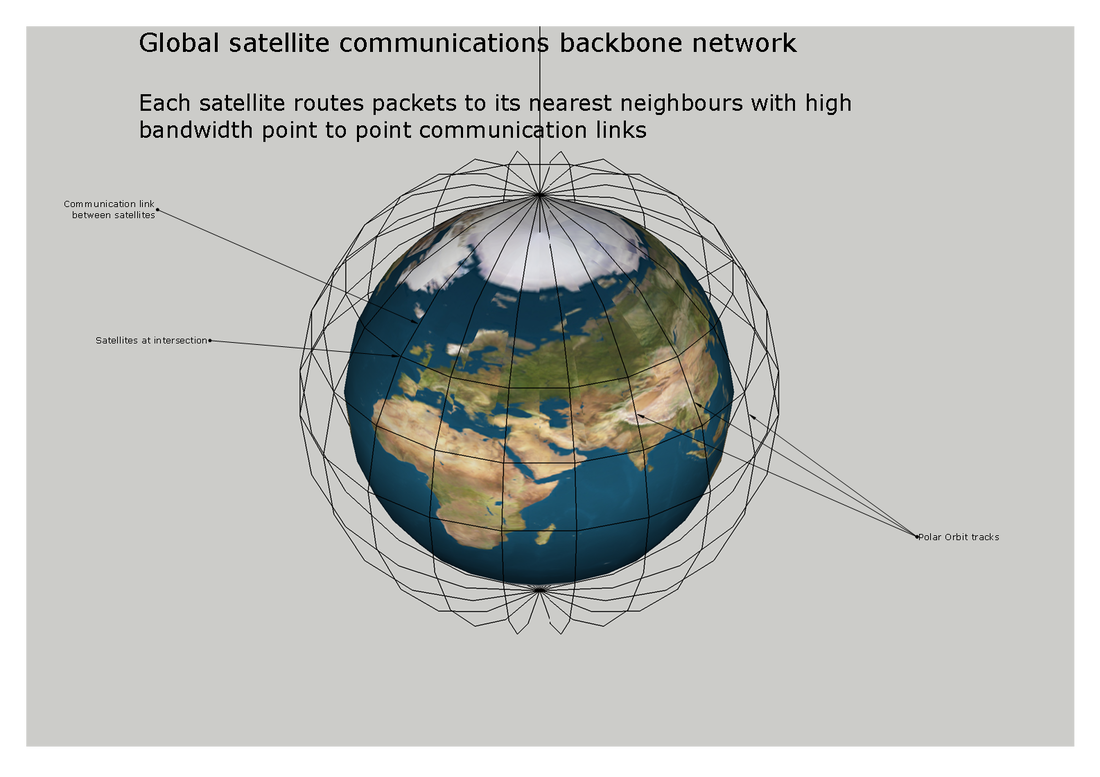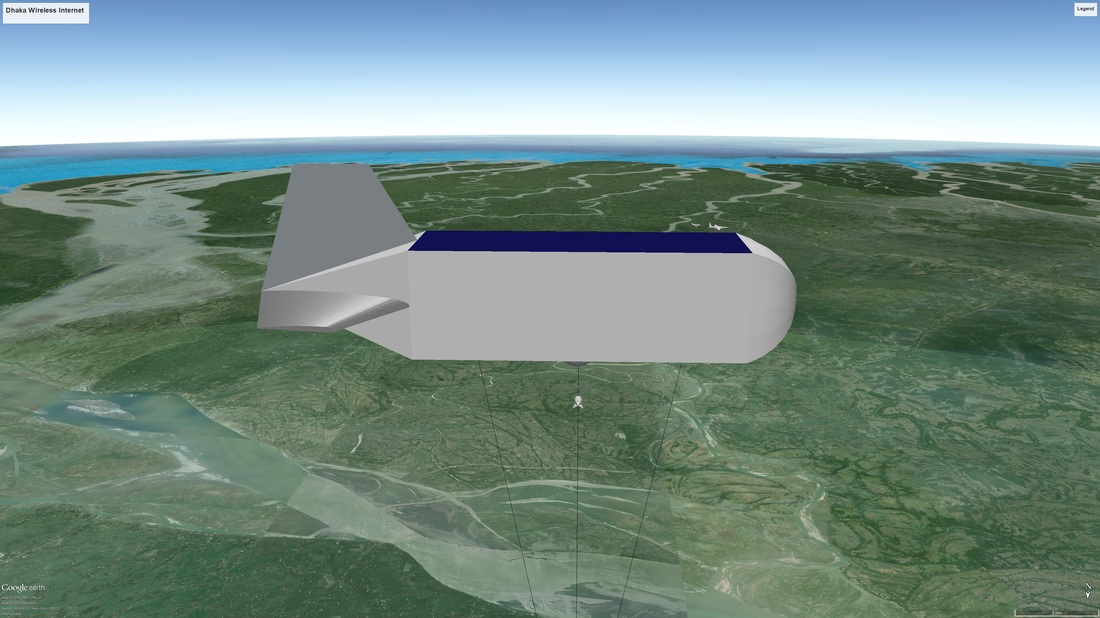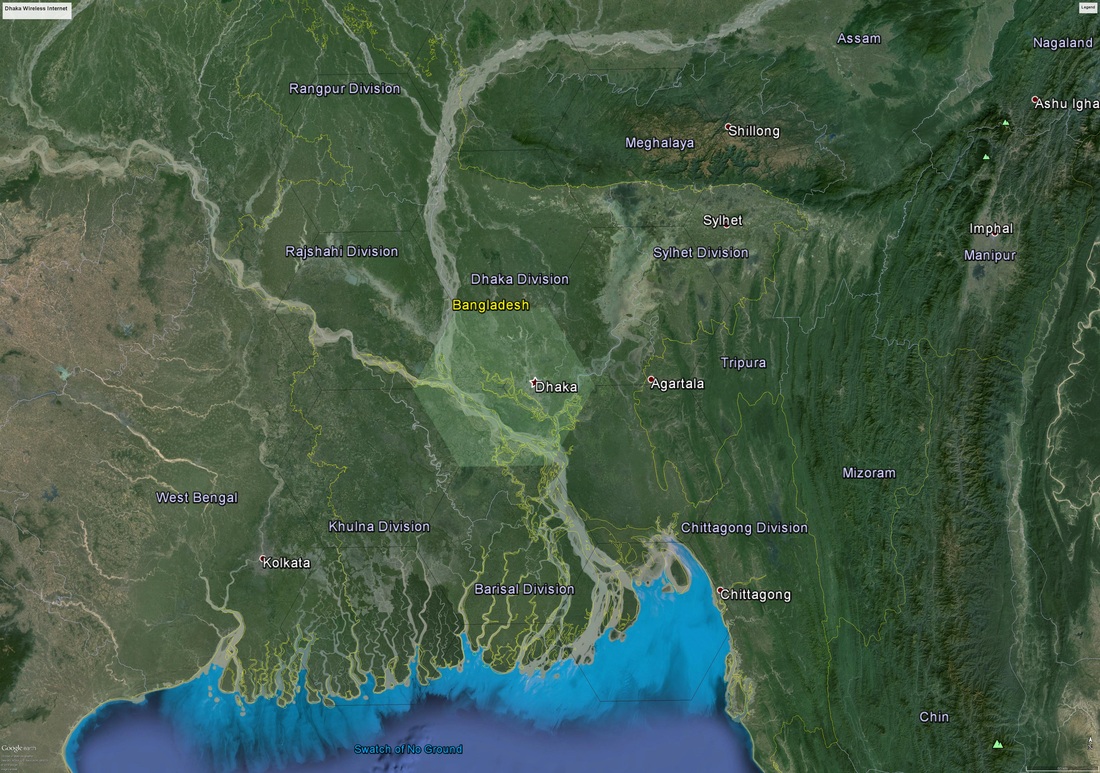|
Bill Gates is perhaps the most influential public advocate for a "technology led" approach to reducing Green House Gas (GHG) emissions. This article, and this site are strong advocates of the "Policy led" approach. Unfortunately, as this article shows, Bill, by advocating that the funds currently used to support the "Policy led" approach be used instead to fund R&D and the "Technology led" approach is adding to the extreme polarization that marks this debate. Those who agree on the urgent need to reduce GHG emissions don't need to waste their time fighting each other. They need to talk to each other and not at each other.
A reasonable analysis would say that both approaches are necessary. It is clear that on the current path, the technologies supported by the policy led approach are not succeeding in reducing overall CO2 emissions and are unlikely to ever have a sufficiently large impact. At a global level, the developing world, which accounts for almost all growth in world energy consumption, has resisted policies to reduce GHG emissions since the 90's and continue to do so, based largely on economic concerns. When viewed at a global level, alternative energy has gone through a series of local boom and bust cycles as policy support has waxed and waned. Currently, Europe which used to be the leader has slipped back as policy has waned and China and Japan have come forward as policy has waxed. The US has gone up and down as policy has oscillated but has not been a significant player at the global level for decades. Because of declining PV prices driven by China, the Investment Tax Credit (ITC) and low interest rates have made PV investable in the US. The ITC and the US PV boom will probably end next year, a reminder of the fickle "boom and bust" nature of the "policy driven" approach. The subsidy level for alternative energy investment worldwide is about $100B/year, about half of the $200B/year world investment in alternative energy electricity generation, which in turn is about half of the $400B/year investment in electricity generation. It is going to have a hard time increasing significantly from this already significant level. We need better clean energy technologies, but as Bill Gates points out, the investment level in energy R&D is pitifully low. The "policy led" advocates have to accept this reality. "Policy led" has to accept a change to include significant R&D in a wider range of speculative technologies, not just subsidizing an entrenched status quo. By Edmund Kelly
Comments
By Edmund Kelly
This article in next big future highlights the rapid advances in large scale desalination deployment that Israel has led over the last decade. Israel, a country of 8 million people, has gone from a precarious water supply situation to a position today where 50% of its water supply is from desalination and by 2020 it will be 70%. Fortuitously for Israel this has occurred while the Middle East is in the middle of a multi year drought which would otherwise have had a serious economic impact, as has occurred elsewhere in the Middle East. As this recent paper illustrates in detail, reverse osmosis (RO) desalination has been steadily improving and is being deployed on an increasingly large scale worldwide, not just in Israel. The Israeli company IDE is selling water from the latest plant at Sorek for 58 cents a cubic meter. That is about $690/acre-foot, or less than much of the water purchased in California, some of which costs as much as $1,200/acre-foot. As the paper illustrates there are strong prospects for further cost reduction. Reverse osmosis currently consumes about 3kWh of electricity to produce a cubic meter of water. At $0.06/kWh that is $0.18/m3 or about one third of the cost. Providing the energy for desalination from a cheap and sustainable, high utilization source would alleviate a major environmental concern that limits a broader acceptability of desalination, particularly in California. Currently wind and solar alternative energy sources are expensive and worse, have a low utilization. The low utilization means desalination plants would have an equally low utilization. The combination of high cost and low utilization makes desalination powered by current intermittent alternative energy multiple times the cost from fossil fuels. The StratoSolar solution of high utilization PV combined with gravity energy storage provides a cheap, high utilization, clean sustainable source of energy for desalination. Its lower cost over time will help further reduce the cost of clean water. The continuous cost reduction learning curve of RO desalination combined with StratoSolar electricity would reduce water costs to around $0.20/m3 ($230/acre-foot) by the early 2020s. This would make desalination the cheapest and most environmentally friendly source of water, potentially reducing some of the environmental impacts of the current exploitation of natural clean water sources. By Edmund Kelly
There was a recent article in IEEE Spectrum that explained why Google halted an energy research effort called RE<C (Renewable Energy less than Coal). It prompted this critical analysis by Joe Romm. Its rare to see this perspective on clean energy discussed in any detail, so I was pleasantly surprised to see two articles on this topic. Between them they explained two positions that have much in common but differ in important ways. The Google engineers discussed how they had started with the goal of renewable energy less than coal and after several years of effort came to the conclusion that current technologies were not going to achieve that goal. In large part this realization came from the understanding that the problem was far larger than they had initially understood. Google halted their efforts in 2011. Google invests heavily in alternative energy deployment and in its operations is very focused on reducing energy, so halting RE<C was in no way a vote against clean energy or dealing with climate change. Joe tried to paint the Goggle engineers as confused and misguided. Joe is a strong advocate for the status quo opinion on how to deal with climate change. Basically that position is; what we have with current wind and solar is good enough and what is needed is policy change, preferably a carbon tax. This tax will somehow magically cause fossil fuels to decline and alternative energy to prosper. Joe does not see RE<C as a necessary or desirable condition for dealing with climate change. At its core this is a view that politics can dominate the large scale economics of energy. When Joe discusses the problems with nuclear power he is happy to use the facts of nuclear costs to counter the optimistic promises of nuclear advocates. In contrast when Joe discusses energy policy he uses the optimistic promises of carbon taxes rather that the facts of decades of failure to get agreement on such policies and the overwhelming evidence that such policies are unlikely to ever be approved at a global level. On top of that there is no clear evidence that such taxes will have the desired consequences. Developing nations, where most new energy consumption is concentrated see higher cost energy as a threat to their development. The central debate is simple. Some (including Bill Gates) see RE<C as a necessary condition for the world to deal with climate change. This opinion is guided by the facts on the ground and the central importance of economics in decision making. Joe and the status quo clean energy consensus he represents see economics as secondary to policy, and believe that advocacy will achieve policy change and policy change will lead to the demise of fossil fuels and the rise of clean energy. StratoSolar is a solution to RE<C. As Joe makes clear, the clean energy status quo does not believe that such solutions can exist and that they are not necessary. Unfortunately this perspective is self fulfilling in ensuring no such solution sees the light of day. By Edmund Kelly A StratoSolar platform’s unique capability to enhance emerging satellite Internet communications9/29/2014 Google and Facebook have both publicly announced they plan to spend billions on satellite communications to bring internet access to the developing world. Recent departures from Google of key personnel associated with Google's satellite communications effort shed some light on the reality of what is happening at Google and elsewhere. These efforts are very real and have implications far beyond internet access for the developing world.
Apparently a team that Google had hired from O3b including Greg Wyler, Brian Holz and David Bettinger have recently departed Google and are the founders of WorldVU a satellite internet start up aiming to launch 360 satellites into 800 km and 950 km polar orbits starting in 2019. WorldVU has the rights to 2 GHz of KU band (12-18 GHz). Satellites will fly in 20 planes each with 18 satellites providing complete world internet coverage. Also, Michael Tseytlin, another satellite executive previously at Google recently joined Facebook’s connectivity lab. This article implies he has some authority. While these departures imply some confusion at Google, their recent purchase of Skybox means they now have in house capability to design and deploy satellites. Skybox has made and launched small satellites for imaging. This has obvious tie ins with lots of Google mapping and geographical information efforts but this expertise could also be leveraged for telecommunications. So it appears that there are three very serious efforts to launch low earth orbit constellations of satellites for internet communications. WorldVU, Google and Facebook are publicly each spending billions on their individual efforts and the movement of the key individuals mentioned previously backs up the reality of their statements. These are the early participants in what may turn into a new wild west in space as the broader implications of this emerging technology become apparent. Obvious examples of companies with both the financial resources and business need to compete are Apple and Microsoft. The public focus of these efforts at the moment is on the satellite to ground links that provides Internet access to the developing world, but the implications of the technology are potentially far more significant than that. The point to point communication links between satellites together form a private, high bandwidth, global, secure, reliable, backbone communications network that is independent of any nation. Based on free space optical (FSO) links and/or high frequency point to point microwave links the bandwidth of this backbone in space could eventually surpass that of the terrestrial internet backbone. Nations can control communications from the satellites to the ground but not point to point communication between satellites. Discussions of satellite communication for the developing world usually focuses on the customer end but an equally important aspect is the backhaul communications to the internet backbone. Backhaul relies on high bandwidth wireless communication between satellites and complex ground stations connected to the Internet backbone. This communication needs expensive, scarce and highly regulated bandwidth and expensive and complex ground stations. This is where StratoSolar platforms can offer a unique capability not possible with Loon, drones or High Altitude Airships. Because they are above most of the atmosphere, the same (unregulated) free space optical (FSO) links or high frequency microwave links used to communicate between satellites can communicate reliably with a receiver on a StratoSolar platform that then forwards the communications down high bandwidth fiber optic links attached to the tether. The tether is a unique attribute of StratoSolar platforms that is usually seen as a negative, but for this application it is a big positive. This connects the backbone in space directly to terrestrial backbone networks with the same private, high bandwidth, secure, reliable, communications. StratoSolar platforms can be situated near convenient connection points to the backbone or data centers. When thought of as data center connections, the ability of the platforms to also provide reliable 24/7/365 power to the data centers would allow more flexibility in data center location and less dependence on external energy infrastructure or logistics like fuel supply. This vision of an internet backbone in space seems an entirely plausible consequence of the coming low earth orbit satellite networks and the unique capabilities of the StratoSolar platform and its tether would make the case even stronger. By Edmund Kelly Google and Facebook have raised awareness of alternative strategies to get Internet service to the other three billion (O3B) without internet access in the developing world. Their motivations are not altruistic. The O3B are their future customers. Google is pursuing balloons with the Loon project, high altitude drones with its purchase of Titan, and satellites with its announcement that it plans to deploy a constellation of 180 medium earth orbit satellites. Facebook has announced it is deploying satellites and purchased Ascenta, a drone company.
A quick look at internet statistics shows that the majority of those without an Internet connection are in Asia, about 2.8 Billion. A look at land areas in the countries that account for the bulk of the market shows that population densities are very high. This combination requires a high total bandwidth over relatively small land areas. We call this a high bandwidth density solution. Current and proposed satellite solutions can only provide low bandwidth density. Similarly Google Loon and high altitude drones have very small payloads and can only provide low bandwidth density. All these technologies are years from deployment and have difficulty with a low $1.00/month price. We propose a high bandwidth density StratoSolar platform wireless Internet solution using stratospheric permanently tethered platforms. A platform tethered at 20km altitude can provide reliable wireless internet service to a radius of about 75km, which is an area of about 15,000km2. For the population density in Asia, a wireless internet platform solution covering an area of 15,000km2 needs to provide enough bandwidth for from about 1,000,000 to 8,000,000 customers, or up to a total of about one terabit per second for broadband access. A crude analysis to scope the problem yields a platform count of about 1,100 for Asia. In most cases there are low population density areas that would be best served with low bandwidth density solutions like satellites, so the number of platforms would be less (perhaps 600). This is especially true for China. There would also be very high bandwidth density areas in urban cores where the wireless platform bandwidth density would be insufficient to satisfy the entire market. We propose a quickly deploy-able solution based on existing hardware and software currently being used by the rapidly growing wireless internet service provider (WISP) market that uses the unlicensed radio bands. As is currently done with satellites we propose to provide very large overall bandwidth by using many spot beams with massive frequency re-use. The solution can be thought of as a WISP with a very tall tower that supports a lot of antenna. With highly directional antenna at both the platform and the customer the link budgets are conservative and the interference requirements of the unlicensed bands can be met. We would envisage from about 271 to 1000 cells per platform, providing broadband Internet access to from 1,000,000 to 8,000,000 customers. The aggregate cell throughput exceeds 1Gb/s. The large payload, large antenna support structure area, and large continuous PV power with gravity energy storage provided by the platform are what enable the rapid deployment of this platform composed largely of off the shelf wireless internet and internet switch hardware. The off the shelf wireless hardware and the antenna are not designed for miniaturization and weigh several tonnes and consume several kW of power. The major impediment to deployment is political. Each country will be different. The only physical problem is the hazard that tethers pose to aviation, which can be handled by the airspace regulator of each country. Commercial aviation in Asia is very small and general aviation is almost non-existent compared to the US and Europe. The politics of communications infrastructure are harder to gauge. China may be a non starter. The initial goal is to get one country to deploy one platform. The economics are very favorable and would provide internet service at prices that most households in Asia could afford . If the average platform has 4,000,000 customers at $1:00/month, that is $48M/year income for a platform that costs about $4M including the wireless hardware. Customer premises equipment (CPE) would be about $25 or less per customer. $25 is a lot of money in large parts of the target market, so reducing CPE costs and methods of financing CPE are important. From an individual countries perspective, internet service deployment can occur without much investment and in a timeframe dictated mostly by customers. High altitude platforms will deploy in less than a week once airspace is approved. Coverage for a country could be deployed in less than a year. Initially a backbone internet could be provided with wireless or FSO links between platforms. Once a platform is deployed customers can buy or rent CPE and be on the internet immediately. They will need electricity, but that might come from a PV panel and a battery in an isolated area. A local wireless base station could provide Wi-Fi internet to a village. By Edmund Kelly |
Archives
December 2023
Categories
All
|
|
© 2024 StratoSolar Inc. All rights reserved.
|
Contact Us
|




 RSS Feed
RSS Feed